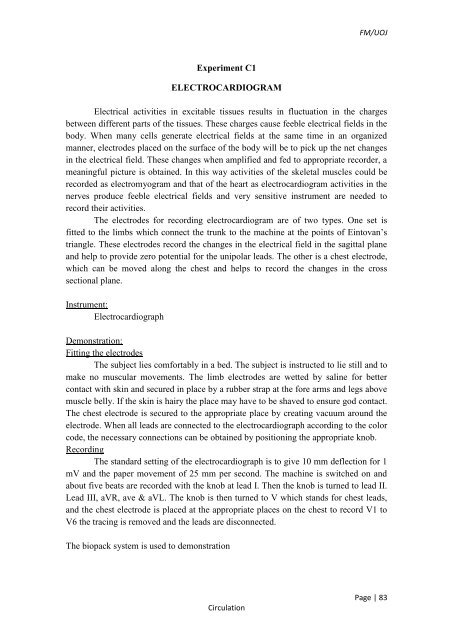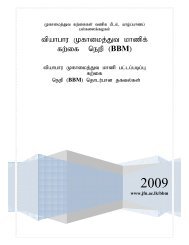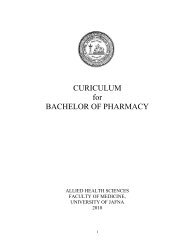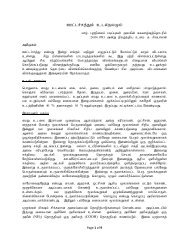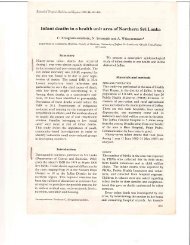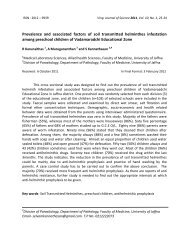MANUAL PHYSIOLOGY PRACTICAL - Repository:The Medical ...
MANUAL PHYSIOLOGY PRACTICAL - Repository:The Medical ...
MANUAL PHYSIOLOGY PRACTICAL - Repository:The Medical ...
Create successful ePaper yourself
Turn your PDF publications into a flip-book with our unique Google optimized e-Paper software.
FM/UOJ<br />
Experiment C1<br />
ELECTROCARDIOGRAM<br />
Electrical activities in excitable tissues results in fluctuation in the charges<br />
between different parts of the tissues. <strong>The</strong>se charges cause feeble electrical fields in the<br />
body. When many cells generate electrical fields at the same time in an organized<br />
manner, electrodes placed on the surface of the body will be to pick up the net changes<br />
in the electrical field. <strong>The</strong>se changes when amplified and fed to appropriate recorder, a<br />
meaningful picture is obtained. In this way activities of the skeletal muscles could be<br />
recorded as electromyogram and that of the heart as electrocardiogram activities in the<br />
nerves produce feeble electrical fields and very sensitive instrument are needed to<br />
record their activities.<br />
<strong>The</strong> electrodes for recording electrocardiogram are of two types. One set is<br />
fitted to the limbs which connect the trunk to the machine at the points of Eintovan’s<br />
triangle. <strong>The</strong>se electrodes record the changes in the electrical field in the sagittal plane<br />
and help to provide zero potential for the unipolar leads. <strong>The</strong> other is a chest electrode,<br />
which can be moved along the chest and helps to record the changes in the cross<br />
sectional plane.<br />
Instrument:<br />
Electrocardiograph<br />
Demonstration:<br />
Fitting the electrodes<br />
<strong>The</strong> subject lies comfortably in a bed. <strong>The</strong> subject is instructed to lie still and to<br />
make no muscular movements. <strong>The</strong> limb electrodes are wetted by saline for better<br />
contact with skin and secured in place by a rubber strap at the fore arms and legs above<br />
muscle belly. If the skin is hairy the place may have to be shaved to ensure god contact.<br />
<strong>The</strong> chest electrode is secured to the appropriate place by creating vacuum around the<br />
electrode. When all leads are connected to the electrocardiograph according to the color<br />
code, the necessary connections can be obtained by positioning the appropriate knob.<br />
Recording<br />
<strong>The</strong> standard setting of the electrocardiograph is to give 10 mm deflection for 1<br />
mV and the paper movement of 25 mm per second. <strong>The</strong> machine is switched on and<br />
about five beats are recorded with the knob at lead I. <strong>The</strong>n the knob is turned to lead II.<br />
Lead III, aVR, ave & aVL. <strong>The</strong> knob is then turned to V which stands for chest leads,<br />
and the chest electrode is placed at the appropriate places on the chest to record V1 to<br />
V6 the tracing is removed and the leads are disconnected.<br />
<strong>The</strong> biopack system is used to demonstration<br />
Circulation<br />
Page | 83


